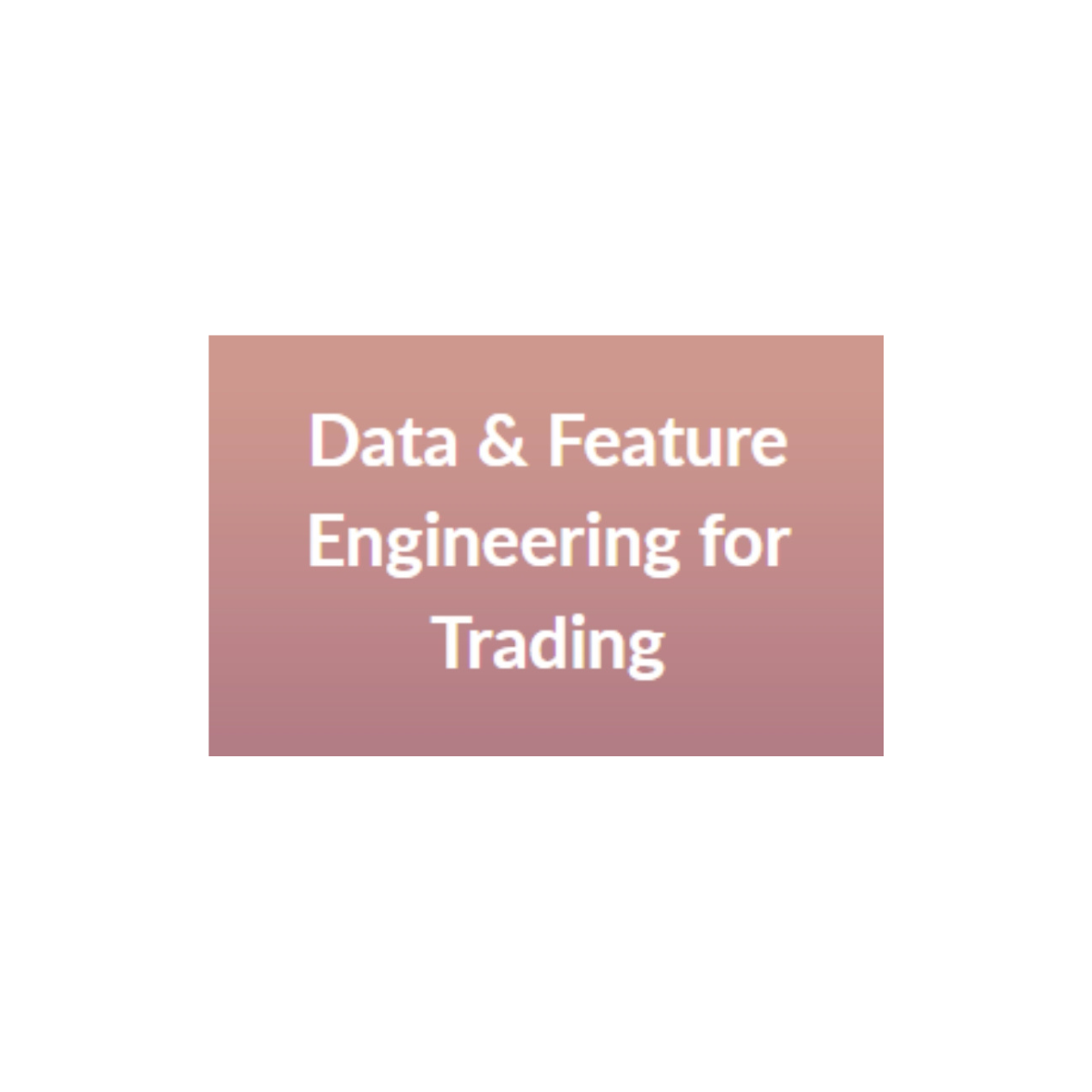One crucial ability that sticks out above the others for handling the hectic world of trading is data and feature engineering. Promoted by influential figures Ermest Chan & Roger Hunter, this vital procedure may significantly improve your trading tactics and giving you a strong competitive advantage. However, what is feature and data engineering precisely, and why is it so important?
We’ll examine advanced techniques, go into the foundations of data and feature engineering in trading, and show you how these techniques may improve your trading. This book, Data & Feature Engineering for Trading by Ermest Chan & Roger Hunter, is your pass to more informed choices and profitable trades, regardless of your level of experience.
Data and Feature Engineering: What is it?
To put it simply, data and feature engineering is the process of turning unstructured data into valuable features that can be included into machine learning models to forecast asset values or market trends. This procedure is crucial since the foundation of every strong trading model is comprised of sturdy features and high-quality data.
Consider yourself a detective. You wouldn’t use unfiltered, raw data to solve situations. Rather, you would collect hints, assemble proof, and draw wise judgments. Similar to this, data and feature engineering is used in trading to sort through massive amounts of financial data and find patterns and signals that may point to lucrative transactions.
Data Engineering’s Function in Trading and Acquiring High-Quality Data
Gathering top-notch data is the initial stage in the data engineering process. News stories, trade volume, price history, and economic indicators are a few examples of this. Ermest Chan & Roger Hunter – Data & Feature Engineering for Trading state that the performance of your model can be significantly impacted by the completeness and quality of your data sources.
Historical Data: It is essential to make use of past price data. Building up reliable data for backtesting can provide important information.
Economic Indicators: Data on GDP, inflation, and unemployment rates provide decision-makers the financial background they need to make well-informed choices.
News Feeds: Understanding market movements and reactions may be achieved by utilizing news feeds to pinpoint the emotion of the market.
Preparing Data
Inconsistencies and noise are common in raw data. Preprocessing is putting the data in a format that is appropriate for analysis and cleaning it, taking care of outliers and missing numbers. This guarantees the accuracy and dependability of the data injected into your models.
Handling Missing Values: To avoid distorted outcomes, missing data points might be interpolated or imputated.
Outlier Detection: By recognizing and controlling outliers, severe or non-representative data items are protected from the model.
Feature Engineering: Predictive Models’ Foundation
Extraction of pertinent characteristics comes next once the data has been cleaned and organized. Consider features as the components of a recipe; each one contributes differently to the creation of the finished product. Features in trading might be anything from sentiment ratings gleaned from news stories to price momentum and trade volume.
Typical Elements of Trading Models
Technical Measures: metrics that might indicate chances for buying or selling, such as Bollinger Bands, Moving Averages (MA), and Relative Strength Index (RSI).
Price momentum is the ability to predict future movements by observing the direction and pace of price changes.
Volatility Measures: Measuring price fluctuations to evaluate risk and possible rewards.
The Significance of Functional Characteristics
Irrelevant features can cause overfitting and subpar performance, whereas useful features increase the predictive potential of the model. One research, for instance, found that adding volatility metrics to trading models increased forecast accuracy by over 15%.
Making Personalized Features
The significance of creating unique features suited to particular trading techniques is emphasized by Ermest Chan and Roger Hunter. Traders can identify subtle indications that are frequently overlooked by traditional indicators by creating distinctive characteristics that reflect complex market movements.
Data and Feature Engineering Tools and Techniques
R and Python: The Data Titans
These programming languages provide flexible libraries and frameworks made especially for feature extraction and data manipulation.
NumPy and Pandas are necessary for numerical calculations and data handling.
Scikit-learn: boasts a collection of preprocessing, cross-validation, and model fitting tools.
Libraries for Natural Language Processing (NLP): converting social media posts and news articles into measurable sentiment ratings.
Algorithms for Machine Learning: Converting Features into Predictions
To forecast the market, models such as Neural Networks, Random Forest, and Linear Regression use designed features. Every algorithm has its advantages and works well for certain kinds of prediction jobs. Neural Networks are good at capturing nonlinear relationships, whereas Random Forest performs well for classification tasks.
Validation and Testing
Trading models are tested and validated using historical data to determine their efficacy. In order to verify the model, this entails dividing the data into training and test sets and utilizing performance indicators such as mean squared error or accuracy rates.
Data and Feature Engineering’s Future in Trading
Data and feature engineering is advancing quickly due to advances in quantum computing and artificial intelligence. Among the anticipated trends are:
AI-driven Feature Selection: Using AI to automatically find significant characteristics, this process saves time and improves model correctness.
Using quantum algorithms to process large datasets at previously unheard-of speeds is known as quantum computing.
Conclusion: What You Should Do Next with Roger Hunter and Ermest Chan
In today’s trader’s toolbox, data and feature engineering are essential. Traders that are proficient in these strategies will be able to recognize profitable opportunities, reduce risks, and make better selections. High-quality data and perceptive features pave the way for trading excellence, as suggested by Ermest Chan & Roger Hunter – Data & Feature Engineering for Trading.
Are you prepared to transform your trading tactics? Browse our advanced courses and related blogs to learn more about data and feature engineering. Visit this link to view our in-depth guidance, or get in touch with us for a free consultation.
You’ve only just begun to explore the field of feature and data engineering. Gaining information brings you one step closer to being an expert in the trading scene, and with Ermest Chan & Roger Hunter at your side, the possibilities are endless. In the trading industry, never stop learning, maintaining your curiosity, and letting data be your compass.





